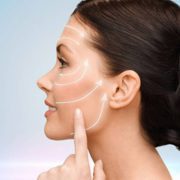What is Rhinoplasty?
Rhinoplasty, also known as rhinoplasty, is a surgical procedure performed to change the shape and improve the function of the nose. This procedure aims to improve the size, shape and profile of the nose by reshaping the nasal bone and cartilage. Rhinoplasty is performed for both aesthetic and functional reasons.
Types of Rhinoplasty
Closed Rhinoplasty
Closed rhinoplasty is a type of rhinoplasty that is performed through small incisions made in the nostrils. This method leaves no visible scars on the nose. Closed rhinoplasty is usually used for minor corrections to the nasal bone.
Open Rhinoplasty
Open rhinoplasty is a type of rhinoplasty that is performed through an incision at the base of the nose. This procedure leaves a visible scar on the nose. Open rhinoplasty is used for larger corrections to the nasal bone and cartilage.
Revision Rhinoplasty
Revision rhinoplasty is a procedure performed for patients who are not satisfied with the results of a previous rhinoplasty procedure. This procedure is performed to correct the shape of the nose or to correct previous errors.
Functional Rhinoplasty
Functional rhinoplasty is a procedure performed to correct nasal breathing problems. This procedure can be used to correct a deviated septum inside the nose or to widen the nostrils.
Aesthetic Rhinoplasty
Aesthetic rhinoplasty is a procedure performed to improve the appearance of the nose. This procedure is used to change the size, shape or profile of the nose.
Combination Rhinoplasty
Combination rhinoplasty is a procedure performed for both aesthetic and functional reasons. It can be used to correct the shape of the nose and relieve breathing problems.
Types of rhinoplasty vary depending on the patient's needs and goals. A plastic surgeon determines the most appropriate type of rhinoplasty by evaluating the patient's condition.
Preparations Before Rhinoplasty Surgery
Preparations prior to nose surgery are made to assess the patient's general health and prepare for surgery. These preparations include:
Medical History Review
A medical history is an evaluation performed to gather information about a patient's general health, allergies, medication use, and past surgeries. This information helps the surgeon evaluate the patient's health and determine the risks of surgery.
Physical Examination
A physical examination is a detailed examination of the nose and facial area. The surgeon evaluates the shape, size and symmetry of the nose. He or she also checks nasal breathing and determines if there are any structural abnormalities.
Laboratory Tests
Laboratory tests are performed to evaluate the patient's overall health. These tests include blood tests, lung function tests, and an EKG (electrocardiogram).
Imaging Tests
In some cases, the surgeon will order imaging tests to examine the patient's nose and facial area in more detail, such as a computed tomography (CT) scan or magnetic resonance imaging (MRI).
Consulting
Before nose surgery, the patient should consult with a plastic surgeon. The surgeon understands the patient's goals and expectations and provides information about the surgery. He also provides information about the risks and complications of the surgery.
Determining the Surgery Date
The surgeon determines the date of surgery based on the patient's health condition and surgery plan. Surgery is usually performed at a time when the patient's general health is good.
Preparations before nose surgery are important for the patient to have a healthy surgery. These preparations help the surgeon evaluate the risks of the surgery and create a surgical plan.
Rhinoplasty Surgery Process
Rhinoplasty is usually performed under general anesthesia. The surgeon uses a variety of techniques to reshape the nasal bone and cartilage. The length of surgery varies depending on the patient's needs and the surgeon's experience.
During nose surgery, the surgeon cuts, shapes, and repositions the nasal bone and cartilage. If necessary, the nasal septum is also corrected. At the end of the surgery, a cast or tape is applied to the nose area.
Recovery After Rhinoplasty Surgery
The recovery process after nose surgery varies depending on the individual characteristics of the patient. Usually, swelling and bruising heal within a few weeks. The final result of the nose shape appears within a few months.
During the recovery period after nose surgery, the patient should use painkillers and cool the nose area with ice. He/she should also avoid activities such as blowing the nose or putting fingers in the nostrils.
Rhinoplasty Surgery Risks and Complications
Rhinoplasty, like any surgical procedure, carries risks and complications. These risks include:
- Bleeding: Bleeding occurs during or after surgery.
- Infection: Infection occurs in the surgical area.
- Breathing problems: Breathing problems may occur after surgery.
- Tissue necrosis: The tissues in the surgical area die.
- Dissatisfaction: The results of the surgery may not be satisfactory.
Conclusion
Rhinoplasty is a surgical procedure performed to change the shape of the nose, reduce or enlarge its size, straighten the nostrils, or improve nasal breathing. Rhinoplasty is performed for both aesthetic and functional reasons.
Rhinoplasty is performed in two basic types: open and closed. Open rhinoplasty is used to correct more complex nasal deformities, while closed rhinoplasty is performed to correct milder nasal deformities.
Before the nose surgery, you will meet with your doctor to get information about the surgery and share your expectations. You will also provide information about your medical history, allergies, and medications you are using.
After surgery, swelling and bruising occur in the nose area. These will heal over time. The healing process varies depending on the person. However, swelling and bruising in the nose area usually subside within a few weeks. Full recovery takes several months.
Rhinoplasty is an effective option for people who want to change the shape of their nose or improve nasal breathing. However, it is important to discuss your expectations and risks with your doctor before undergoing surgery.
You can learn more about this topic by sharing your comments and questions. We would also love to hear your personal experiences and suggestions.
For more and to see successful surgery results instagram Visit our page. Contact us now to plan your surgery. communicationGo to .











